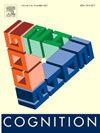从儿童的小尺度空间能力预测大尺度空间能力:双维度框架的应用
IF 2.8
1区 心理学
Q1 PSYCHOLOGY, EXPERIMENTAL
引用次数: 0
摘要
寻路是一种大规模的空间能力,涉及对环境的导航,可分为路线、地标和调查三种知识。Newcombe 和 Shipley(2015 年)提出了一个双维空间框架,将空间能力分为四类:内在-静态、内在-动态、外在-静态和外在-动态。这些能力通常在桌面等小规模环境中进行评估。研究寻路知识与小尺度空间能力之间的关系对于理解不同环境尺度下的空间认知具有重要的理论意义。它对于设计更有效的培训计划以提高寻路技能也有实际意义。然而,将这两者联系起来的现有文献十分有限,而且参差不齐,尤其是针对儿童的文献。本研究利用双维度框架来研究儿童小尺度空间能力和大尺度空间能力之间的关系。我们假设,内在能力应与地标知识相关,而动态能力应与路线知识相关。我们对 171 名 4 至 9 岁发育正常的儿童进行了八项测量四个空间类别的小规模空间任务和一项测量路线和地标知识的寻路任务。结果表明,动态空间能力对路线知识有明显的预测作用,并能调节年龄和性别对路线知识的影响。此外,动态能力和内在静态能力也能预测地标知识,并能调节年龄对地标知识的影响。这些结果表明,小尺度空间能力与大尺度空间能力之间的关联具有选择性和特异性,但又很强,为空间认知理论的进一步发展提供了启示。此外,还讨论了实际意义。本文章由计算机程序翻译,如有差异,请以英文原文为准。
Predicting large-scale spatial ability from small-scale spatial abilities in children: An application of the double-dimension framework
Wayfinding, a large-scale spatial ability, involves the navigation of one's environment and can be classified into three types of knowledge: route, landmark, and survey. Newcombe and Shipley (2015) proposed a double-dimension spatial framework that classifies spatial abilities into four categories: intrinsic-static, intrinsic-dynamic, extrinsic-static, and extrinsic-dynamic. These abilities are usually assessed in small-scale environments, such as in desktop settings. Examining the relationship between wayfinding knowledge and small-scale spatial abilities has important theoretical implications for understanding spatial cognition at different environmental scales. It also has practical implications for designing more effective training programs to improve wayfinding skills. However, the existing literature linking the two is limited and mixed, especially in children. The current study utilized the double-dimension framework to examine the relationship between small-scale and large-scale spatial abilities in children. We hypothesized that intrinsic abilities should be associated with landmark knowledge while dynamic abilities should be related to route knowledge. Eight small-scale spatial tasks measuring four spatial categories and one wayfinding task measuring route and landmark knowledge were administered to 171 typically developing children between the ages of four and nine. Dynamic spatial abilities significantly predicted route knowledge and mediated the effects of age and sex on route knowledge. In addition, dynamic and intrinsic-static abilities predicted landmark knowledge and also mediated the effects of age on landmark knowledge. These results showed the associations between small-scale spatial abilities and large-scale spatial abilities were selective and specific yet strong, providing insights into further theoretical advancements in spatial cognition. Practical implications were also discussed.
求助全文
通过发布文献求助,成功后即可免费获取论文全文。
去求助
来源期刊

Cognition
PSYCHOLOGY, EXPERIMENTAL-
CiteScore
6.40
自引率
5.90%
发文量
283
期刊介绍:
Cognition is an international journal that publishes theoretical and experimental papers on the study of the mind. It covers a wide variety of subjects concerning all the different aspects of cognition, ranging from biological and experimental studies to formal analysis. Contributions from the fields of psychology, neuroscience, linguistics, computer science, mathematics, ethology and philosophy are welcome in this journal provided that they have some bearing on the functioning of the mind. In addition, the journal serves as a forum for discussion of social and political aspects of cognitive science.
 求助内容:
求助内容: 应助结果提醒方式:
应助结果提醒方式:


